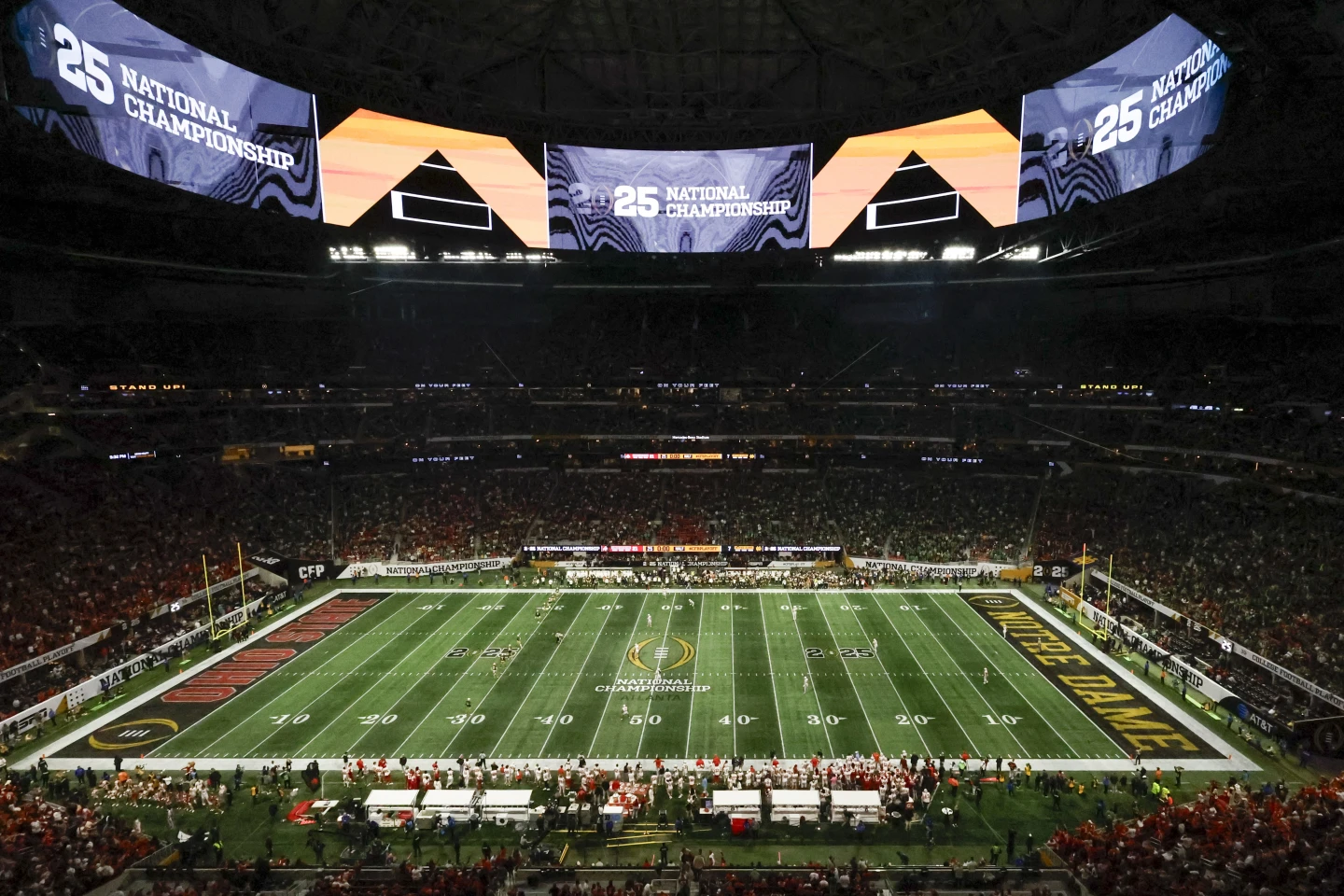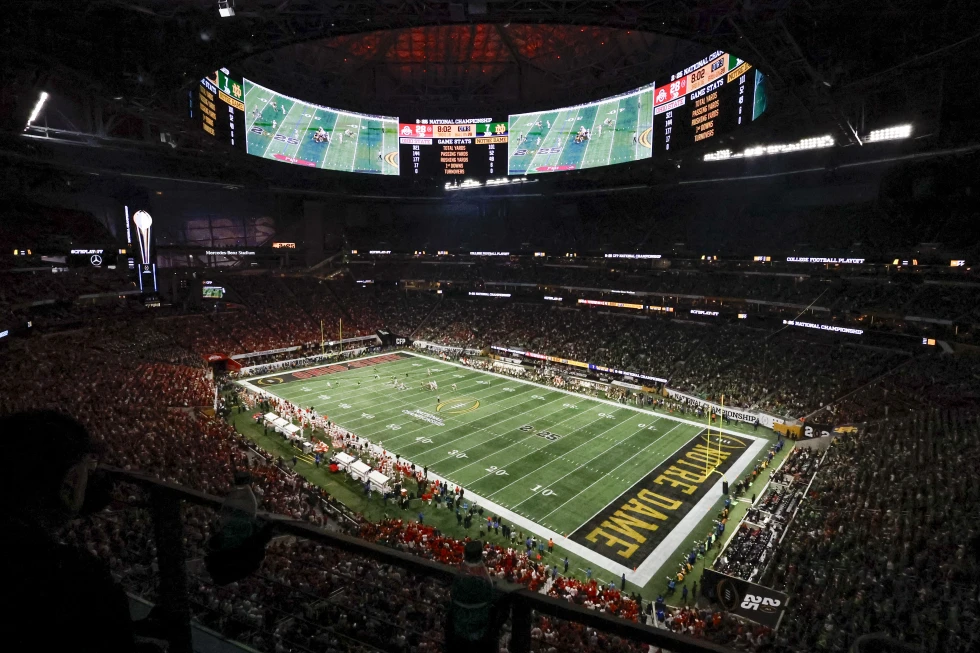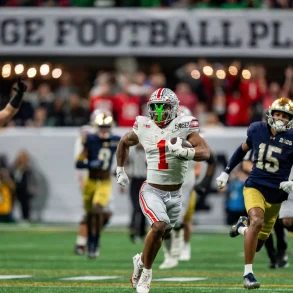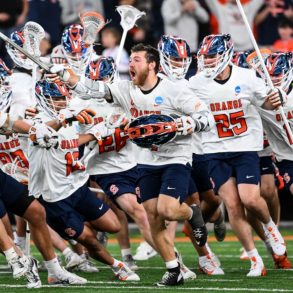The first season of the 12-team College Football Playoff had both exciting moments and some criticisms from fans and the media. The same can be said for ESPN, which carried the games.
Nick Dawson, ESPN’s vice president of college sports programming and acquisitions, said the first season was successful from their perspective. He mentioned that they are now looking at possible improvements for the next season.
“A lot of unknowns doing something for the first time, so you’ll always sort of assess after the fact, learn and potentially look at tweaks or adjustments we might consider for the future,” Dawson said.
The 11 College Football Playoff games averaged 15.6 million viewers according to Nielsen, with viewership increasing in each round. ESPN reported that viewers watched nearly 36 billion minutes of live coverage, which is a 63% increase from the previous year’s seven-game lineup, including the CFP title game and New Year’s six bowl games.
The four first-round games averaged 10.6 million viewers, while the quarterfinals had 16.9 million. The semifinals reached 19.2 million, and Ohio State’s 34-23 win over Notre Dame in the national championship game had 22.1 million viewers.
“Obviously there were a few more games, but to see that kind of jump in just overall consumption of the product is hopefully something we can build on moving forward,” Dawson said.
However, there were challenges with the current format. The audience for the semifinal games dropped by 17% from the previous year, mostly because these games were played on Jan. 1, 2024, rather than on Thursday and Friday nights.
Notre Dame’s 27-24 win over Penn State in the Orange Bowl on Jan. 9 averaged 17.8 million viewers. For comparison, the most-watched “Thursday Night Football” game on Amazon Prime Video this season had 17.29 million viewers for the Green Bay vs. Detroit game on Dec. 2.
The Jan. 10 Cotton Bowl, where Ohio State beat Texas 28-24, averaged 20.6 million viewers, making it the most-watched Friday telecast across all networks in four years.
Next year’s semifinals will help determine if the Thursday/Friday format will continue to be effective.
Ohio State’s win over Notre Dame saw a 12% drop in viewers compared to the 25 million who watched the 2024 Michigan-Washington title game.

CFP games ended up being nine of the 10 most-watched this season, with three games having over 20 million viewers. The Jan. 1 Rose Bowl, which always draws a big audience, was the other top game.
Dawson and ESPN are hoping for more competitive championship games. Since Alabama’s 26-23 overtime win over Georgia in 2018, the last seven title games have had an average margin of victory of 25.4 points. The three least-watched title games in the CFP era have occurred in the past five years.
Monday’s national championship game peaked at 26.1 million viewers during the second quarter (8:30-8:45 p.m. EST) when the score was tied at 7-7. The audience started to drop when Ohio State went up 21-7 at halftime and dropped significantly when they extended their lead to 31-7 midway through the third quarter.
Although Notre Dame made a comeback and got within one possession with five minutes left, the viewership remained lower.
The 2015 title game, where Ohio State defeated Oregon 42-20, is still the most-watched college football game in the CFP era with 33.9 million viewers.
Dawson Remarks
“You always hope for, from a TV perspective, for a tight game to the finish. Right. That’s one of the biggest factors driving the ultimate viewership but it’s also not something that you can control. So you’re going to have ebbs and flows,” Dawson said.
“You hope that this new structure and format as it continues forward, that you’re ultimately creating an even better chance that you’re getting the two best teams in the country at the end matched up in the championship game, which again, you hope that that results in a great game on the field.
“Blowouts are not a college football thing. That occurs in every sport and every playoff from time to time. So you sort of have to accept that’s going to be a reality once in a while.”
One thing that could improve ratings in the future is that the title game will be shown on both ABC and ESPN starting in the 2027 season.
ESPN has the rights to the College Football Playoff until the 2031 season after agreeing to a $7.8 billion deal last March. TNT will air two first-round games again next season under a sublicense with ESPN, and this will expand to two first-round and two quarterfinal games starting in 2026.
There has been some debate over how the top four seeds and first-round byes should be determined, but Dawson said that the decision is up to the CFP committee.
Some people criticized having the title game on Jan. 20, during the NFL playoffs, but Dawson pointed out that there will always be competition with the NFL during December and January.
“I think for us, it’s a process of continuing to assess and evaluate how each year goes and work with the CFP to figure out if there are slight adjustments that we think we could make to put ourselves in an even more advantageous position. But I don’t really see a wholesale change that would eliminate that risk or situation,” he said.







